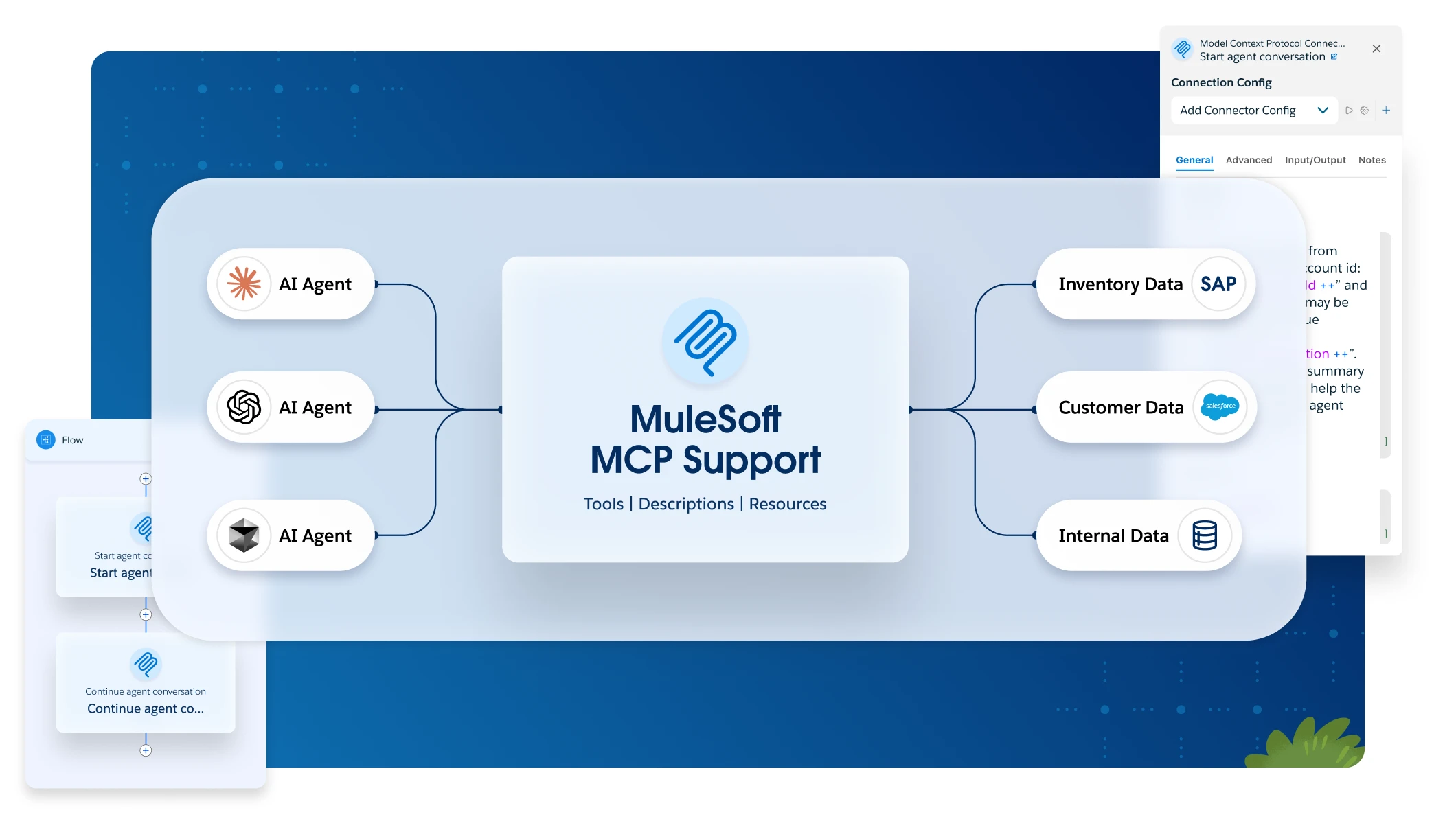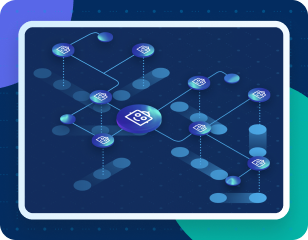History shows us why updating infrastructure is key to supporting innovation. Take the shift from horse-drawn carriages to cars — you couldn’t enjoy all the speed and features of your car if you were only driving it on unpaved roads. The same principle applies to adopting AI for businesses. To make any innovation truly practical for everyday use, the right framework must be in place.
Whether it’s building the literal roads for cars or creating the infrastructure that allows AI to integrate into business processes seamlessly, success depends on preparing the landscape for adoption. That’s why we’re always examining the terrain to see how emerging innovations will impact real-world scenarios.
Our recent report, Top 7 Trends Shaping Digital Transformation in 2025, provides a snapshot of some of the biggest emerging trends and how to prepare for them.
The future of business is increasingly autonomous
This year, AI strategies are expected to mature significantly, with autonomous agents taking center stage.
Autonomous AI Agents are reshaping organizations
In 2025, autonomous AI agents will continue to reshape organizations, but the impact will be wider, driving the rise of the autonomous enterprise. These agents go beyond simple task automation by independently managing repetitive and time-consuming activities so employees can focus on more strategic, high-value work.
An autonomous enterprise leverages this technology to streamline workflows, enhance productivity, and reduce operational bottlenecks, ultimately positioning itself to adapt quickly in a fast-changing business landscape.
For instance, in the healthcare sector, AI agents can manage patient scheduling and data entry, while in software development, they can handle code reviews and testing, freeing up human resources for more complex tasks.
Widespread agent adoption on the horizon
Eighty-two percent of organizations plan to integrate AI agents into their operations within the next three years. These agents respond to prompts and proactively manage routine tasks, relieving overburdened workers in fields like healthcare and software development. This shift isn’t just about efficiency – it’s about enabling businesses to do more with fewer resources while maintaining high-quality output.
To prepare for this future, businesses must address key barriers to AI adoption, prioritizing integration and data management. With 95% of IT leaders highlighting integration issues as a major barrier to AI adoption, it’s clear that building a connected and interoperable framework is essential.
Successful AI implementation relies on feeding autonomous agents focused, relevant data, enabling them to deliver accurate and meaningful results. Leveraging smaller, specialized language models (SLMs) for specific use cases will further enhance performance by tailoring AI capabilities to specific use cases.
Enhancing performance with specialized models
Successful AI implementation relies on feeding autonomous agents focused, relevant data, enabling them to deliver accurate and meaningful results. Leveraging smaller, specialized language models (SLMs) for specific use cases will further enhance performance by tailoring AI capabilities to specific needs.
- Start with small wins to build momentum: Identify a few high-impact, low-complexity tasks that autonomous agents can handle effectively. This approach helps you progressively build confidence in AI while demonstrating measurable results, paving the way to a more autonomous enterprise. For instance, starting with automated customer service chatbots can quickly show the benefits of AI, leading to broader adoption across the organization.
Existing work structures are about to undergo big changes
Autonomous AI agents are changing the way humans work, particularly in customer-facing roles.
Transforming customer interactions
These agents handle time-consuming tasks like answering routine questions through chatbots and self-service portals, freeing employees to focus on deeper, more strategic activities that build stronger customer relationships. For example, a retail company might use AI to manage customer inquiries, allowing sales teams to focus on personalized customer experiences.
Enhancing the work environment
In an AI-driven workplace, AI tools provide support to human workers with capabilities like real-time transcription, personalized training, and scheduling.
By complementing human efforts, these tools help create a more fulfilling work environment while delivering faster, more efficient service to customers. For instance, AI can assist in real-time language translation, making global communication smoother and more effective.
Compelling data supports the shift
The evolution toward an AI-driven workplace is backed by research and data. The World Economic Forum reports that 23% of jobs will experience structural changes within five years due to advances in technology. Further, Accenture found that large language models (LLMs) could impact up to 40% of working hours, helping businesses save up to 14% in operating costs by automating repetitive tasks. These trends highlight the growing role of AI in redefining work structures.
Preparing for transformation
To get ready for this transformation, businesses must invest in reskilling and upskilling their teams. At the same time, employees themselves must consider ways to maximize working alongside AI agents, leveraging AI tools to increase efficiency and productivity.
Often, digital workers will support monotonous tasks to free the human worker to focus on more strategic and critical tasks. By fostering a culture of adaptability and support, organizations can better help their teams thrive in an increasingly autonomous workplace. For example, offering training programs on AI tools and encouraging a collaborative mindset can ensure a smoother transition.
- Empower your workforce with AI skills Help your employees build the confidence and knowledge they need to use AI tools effectively in their daily work. Consider adopting low-code tools that enable teams to create their own solutions, which builds a sense of ownership and makes them more comfortable collaborating with AI technologies. For instance, a marketing team could use low-code platforms to develop personalized customer engagement strategies.
More autonomous agents will require more robust governance
Organizations will have to prioritize governance to ensure these agents work securely within their ecosystems. While AI agents offer significant value by streamlining workflows and improving productivity, they’re also prime targets for security issues.
Security risks and solutions
These agents often serve as gateways to sensitive enterprise and customer data, making them highly attractive to threat actors. Without proper oversight, the same tools that drive innovation can become vulnerabilities to an organization.
Recent statistics underscore the risks associated with AI agent growth. A 2023 study by the Ponemon Institute and Traceable revealed that 60% of organizations experienced at least one data breach due to API exploitation. Meanwhile, Gartner predicts that by 2028, 25% of enterprise breaches will stem from abuse of AI agents.
Addressing API sprawl
IT leaders already recognize the increased need for data security. But as multi-agent architectures grow, so does the challenge of API sprawl – which makes visibility and control more essential than ever. Many tools and tactics are already available for establishing robust governance, including platforms offering built-in security measures like data masking for sensitive information such as PII and payment details.
Ensuring secure integration
As the pressure for implementing AI increases, the emphasis on data security will increase alongside the demand. These platforms must not only enable secure connections between AI agents and data sources but also enforce access controls, maintaining detailed audit trails to meet compliance standards.
By embedding these guardrails into their operations, organizations can protect their data while still fostering innovation, turning security into a catalyst for growth rather than a barrier.
- Align AI deployment with security frameworks Collaborate with cybersecurity teams from the start to embed security measures into AI architectures. This minimizes risks and ensures compliance with data protection regulations, so your innovations don’t become vulnerabilities. For example, conducting regular security audits and implementing multi-factor authentication can significantly enhance the security of AI systems.
Dive deeper into digital transformation trends
Every company’s journey with AI will be unique, shaped by their specific needs and challenges. However, it’s always valuable to dive into what industry leaders are seeing and experiencing and what trends are on the horizon.
By understanding these broader shifts, you can better plan for your own transformation, aligning your strategies with proven best practices and emerging technologies to stay ahead of the curve.These insights are just the beginning. Check out the Top 7 Trends Shaping Digital Transformation in 2025 to uncover more about the forces shaping the future of business, including the transformation of robotic process automation (RPA), the rise of self-integrating apps, and how digital work hubs are continuing to reshape the workforce.









